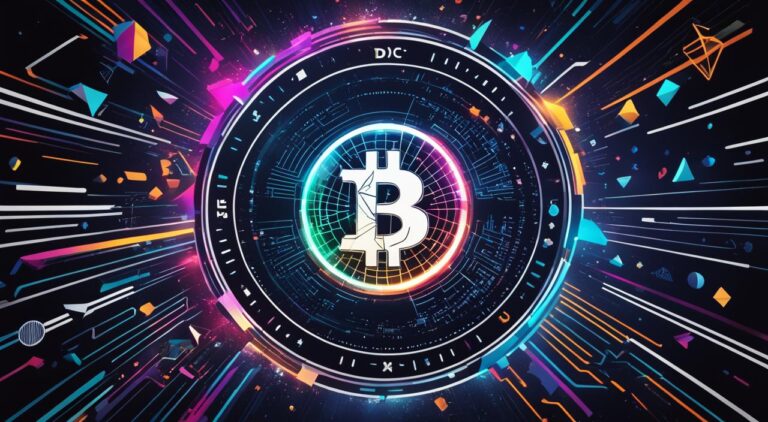
What Is XRP: Your Ultimate Guide to Ripple’s Coin
Key Takeaways:
- XRP is a cryptocurrency used within the Ripple network for transactions.
- It serves as a bridge currency for converting different currencies.
- XRP operates on the Ripple blockchain, ensuring secure and transparent transactions.
- The price of XRP can fluctuate based on market conditions and investor sentiment.
- Stay updated with XRP news to stay informed about market trends and developments.
Welcome to your ultimate guide to XRP, the cryptocurrency of the Ripple network. This article will explore XRP, how it works, and its role in digital assets. Whether new to XRP or looking to deepen your understanding, you’ve come to the right place.
Before diving into the details, let’s start with the basics. XRP is a popular cryptocurrency that operates on the Ripple blockchain. It serves as a medium of exchange within the Ripple network and can be used for various purposes, including investment, trading, and facilitating transactions.
Now, let’s explore some key aspects of XRP:
XRP Explained: XRP is a digital asset that enables fast and secure transactions on the Ripple network. It is a bridge currency for converting different currencies, making it a valuable tool for international transactions.
XRP Cryptocurrency: XRP belongs to the family of cryptocurrencies, decentralized digital currencies that use cryptography for secure transactions and control the creation of new units.
XRP Coin: XRP is often referred to as a coin because it is used as a means of exchange, similar to traditional coins and banknotes. However, unlike physical currencies, XRP exists purely in digital form.
XRP Price: The price of XRP is determined by supply and demand in the market. It can fluctuate based on various factors, including market conditions, investor sentiment, and developments within the Ripple ecosystem.
XRP News: Stay updated with the latest XRP news to stay informed about market trends, regulatory developments, and technological advancements that may impact the value and usage of XRP.
XRP Ripple: Ripple is the company behind XRP and the creator of the Ripple network. While XRP is an integral part of Ripple’s ecosystem, it’s important to note that Ripple also offers other products and services.
XRP Token: XRP is sometimes called a digital asset representing ownership or access rights within a specific blockchain ecosystem. In the case of XRP, it represents access to the Ripple network.
XRP Blockchain: The Ripple network has its blockchain, a distributed ledger that records all XRP transactions. The XRP blockchain ensures transparency, security, and immutability of transaction data.
XRP Digital Asset: XRP is often considered a digital asset rather than a traditional currency due to its unique characteristics and use within the Ripple network.
What Is Ripple?
Ripple is a payment settlement system and currency exchange network built to be a successor to the SWIFT network. It provides a trusted middleman for transactions between two parties by confirming transactions rapidly and securely. It takes a modest charge in the form of XRP for each transaction made on the network.
Ripple revolutionizes the traditional payment settlement by enabling real-time, low-cost, and secure transactions across borders. It eliminates the need for intermediaries, such as correspondent banks, which results in faster and more efficient transactions.
Key Features of Ripple:
- Rapid Transaction Speed: Ripple’s payment settlement system allows for near-instantaneous transaction confirmations, delivering a seamless experience for users.
- Global Currency Exchange: With its extensive currency exchange network, Ripple facilitates the seamless transfer of value between different fiat currencies and cryptocurrencies, eliminating the need for multiple intermediaries and reducing costs.
- Partnerships with Large Financial Institutions: Ripple has established partnerships with numerous large financial institutions, including American Express and Santander, further solidifying its position in the financial industry.
Ripple’s payment settlement system, in conjunction with its currency exchange network, makes it an attractive option for large financial institutions seeking to improve the efficiency and cost-effectiveness of their cross-border transactions. The network’s ability to settle transactions in any currency, including digital assets, provides flexibility and convenience to users.
What Is XRP?
XRP is a cryptocurrency created by Ripple to enable transactions on the Ripple network.
Unlike most other cryptocurrencies, XRP’s blockchain has special characteristics that ensure transaction security. Access to transaction ledgers and verification procedures is limited to ledger holders, providing an added layer of protection.
The consensus protocol used by Ripple’s network, which utilizes XRP, is fairly centralized. This allows users to validate transactions based on trusted parties, enhancing the efficiency and reliability of the network.
Key Features of XRP:
- Secure transaction ledger limited to ledger holders.
- Centralized consensus protocol for trusted transaction validation
These features make XRP a robust cryptocurrency within the Ripple network, facilitating fast and secure transactions for users.
“XRP’s unique blockchain structure provides enhanced security and efficiency for transactions on the Ripple network. The limited access to ledger holders ensures transaction integrity, while the centralized consensus protocol streamlines validation processes.” – Ripple
To better understand the distinctive aspects of XRP, let’s take a closer look at how other cryptocurrencies compare:
| Cryptocurrency | Blockchain Structure | Transaction Validation |
|---|---|---|
| Bitcoin | Decentralized | Mining through proof-of-work |
| Ethereum | Decentralized | Consensus-based verification |
| XRP | Ledger holder access | Centralized validation through trusted parties |
The comparison highlights XRP’s unique blockchain structure and centralized consensus protocol, setting it apart from other cryptocurrencies.
With its focus on security, efficiency, and reliable transaction validation, XRP continues to play a crucial role in advancing the capabilities of the Ripple network.
Working of Ripple
The XRP crypto operates on a unique consensus protocol that ensures the efficiency and security of transaction settlement on the Ripple network. To understand how Ripple works, let’s break it down into key components:
Consensus Protocol
Ripple utilizes a consensus protocol to validate transactions. Validators within the network compare proposed transactions to the most recent version of the XRP ledger. This protocol ensures that only valid transactions are approved and included in the ledger, preventing double spending and maintaining the integrity of the network.
Validators play a crucial role in the validation process, as most validators must accept a transaction to verify it. This distributed consensus mechanism contributes to the network’s reliability and overall security.
Transaction Settlement
Once a transaction is verified through the consensus protocol, it is settled on the Ripple network. The settlement process involves updating the XRP ledger to reflect the completed transaction. This ledger is a decentralized system that stores the Ripple network’s transaction history.
Transaction settlement on Ripple is quick and efficient compared to traditional banking systems. This is due to the consensus protocol’s ability to rapidly validate and settle transactions, eliminating the need for intermediaries and reducing processing times.
“The XRP crypto uses a consensus protocol where validators compare proposed transactions to the most recent version of the XRP ledger to determine validity. The majority of validators must accept a transaction for it to be verified.”
The XRP crypto’s consensus protocol and efficient transaction settlement process make Ripple attractive for individuals and businesses seeking fast, secure, and cost-effective transactions.
Next, we’ll delve into the mining process of Ripple and explore how it differs from other cryptocurrencies.
How Is Ripple Mined?
Ripple (XRP) is created using a crypto ledger similar to blockchain technology but does not require mining like other cryptocurrencies. Instead, XRP tokens were pre-mined early and gradually released onto the market. It is technically possible to mine other cryptocurrencies and exchange them for XRP.
Ripple vs. Bitcoin
When comparing Ripple and Bitcoin, it becomes apparent that these two cryptocurrencies have distinct differences in their consensus protocols, transaction confirmations, and supply.
Ripple utilizes a consensus protocol to confirm transactions quickly, ensuring efficient and secure network operations. This consensus protocol allows for the rapid validation of transactions by trusted parties, resulting in fast transaction confirmations.
In contrast, Bitcoin employs a mining process to validate transactions. Miners compete to solve complex mathematical problems, confirming transactions once a block is successfully mined. This mining process can lead to longer confirmation times than Ripple’s consensus protocol.
Differences also arise in terms of supply. Ripple has a fixed supply of one billion XRP tokens. This limited supply is set to control inflation and maintain stability within the network. On the other hand, Bitcoin has a predetermined maximum supply of 21 million coins, making it a finite asset.
Here is a table summarizing the key differences between Ripple and Bitcoin:
| Ripple | Bitcoin |
|---|---|
| Consensus Protocol | Mining |
| Transaction Confirmations | A limited supply of 21 million coins |
| Quick through a consensus protocol | Fixed supply of one billion XRP tokens |
| Limited supply of 21 million coins |
As the crypto market continues to evolve, understanding the differences between Ripple and Bitcoin is essential for investors and users alike. While Ripple prioritizes fast transaction confirmations through its consensus protocol and operates with a fixed supply of XRP tokens, Bitcoin relies on a mining process and has a limited maximum supply of coins.
Pros and Cons of Ripple
With its innovative technology and XRP transactions, Ripple offers several advantages and disadvantages for users, especially financial institutions and small company owners.
Pros of Ripple
- Inexpensive and Quick Transactions: Ripple enables fast and cost-effective transactions, making it appealing to financial institutions and small business owners looking for efficient payment solutions.
- Bridge Currency: Ripple can act as a bridge currency, facilitating seamless transactions between different currencies. This feature simplifies cross-border transactions and eliminates the need for multiple conversions.
Cons of Ripple
- Less Secure Consensus Methodology: While Ripple’s consensus methodology allows for fast transaction confirmations, some argue it may be less secure than other cryptographic transaction processing systems. However, Ripple has taken steps to address security concerns and continues to evolve its network.
- RippleNet Preference: Ripple’s financial partners primarily use RippleNet, the payment settlement system, rather than the XRP cryptocurrency. This means that the adoption and use of XRP transactions may be limited, affecting its potential value and growth.
“Ripple offers inexpensive and quick transactions, making it attractive to both financial institutions and small business owners. It can also be used as a bridge currency for transactions between different currencies. However, its consensus methodology may be less secure than other cryptographic transaction processing systems, and Ripple’s financial partners primarily use RippleNet instead of the XRP cryptocurrency.”
While Ripple presents compelling benefits for users, it is essential to consider these pros and cons in the context of specific use cases and individual requirements. Understanding the strengths and weaknesses of Ripple can help users make informed decisions about utilizing its services and leveraging XRP transactions effectively.
How to Use Ripple or XRP?
To fully harness the power of Ripple and XRP, you can utilize them as a digital currency for transactions or as a potential investment. The Ripple network also serves as a facilitator for currency exchange, leveraging XRP as a bridge currency. This innovative approach enables quick and cost-effective currency conversions, offering a superior alternative to traditional banking methods.
Regarding digital currency usage, XRP can be employed for various transactions, including online purchases, remittances, peer-to-peer transfers, and more. Its efficient and secure nature makes it an appealing choice for individuals and businesses globally.
“XRP provides a seamless solution for instant and low-cost cross-border transactions, making it a game-changer in the digital currency space.”
Furthermore, the Ripple network is a currency exchange platform, leveraging XRP’s liquidity. It is a bridge currency, facilitating real-time conversions between fiat currencies and cryptocurrencies. By utilizing XRP in this manner, users can avoid multiple intermediaries and enjoy faster settlements with reduced fees.
Here’s an example of how the Ripple network and XRP can be used for currency exchange:
| Currency | Amount |
|---|---|
| USD | 1000 |
| EUR | 824 |
In this scenario, a user wants to convert $1000 USD to Euros using the Ripple network. The network allows for a direct conversion from USD to EUR through the bridge currency feature, eliminating the need for traditional currency exchanges and their associated costs. The user can conveniently receive 824 euros, saving time and money.
Benefits of using Ripple and XRP for currency exchange:
- Speed: Transactions on the Ripple network are processed within seconds, reducing the time spent on currency conversions.
- Cost-Effectiveness: By cutting out intermediaries, Ripple facilitates more affordable currency exchange with competitive rates.
- Security: The Ripple network utilizes advanced cryptography and robust transaction protocols to safeguard user funds and information.
By leveraging the Ripple network and harnessing the power of XRP, users can experience seamless, efficient, and cost-effective currency exchange.
Now that you understand how to use Ripple or XRP for digital currency transactions and exchanges let’s explore how to buy XRP in the next section.
How to Buy Ripple?
If you’re interested in buying XRP cryptocurrency, there are several exchanges where you can purchase it. Some popular options include:
- KuCoin
- Uphold
- Coinmama
These exchanges offer XRP for sale and accept various payment methods, providing flexibility for buyers. Once you’ve chosen an exchange, follow these steps to buy Ripple:
- Create an account on your chosen exchange.
- Complete the necessary verification process to ensure compliance with regulatory requirements.
- Deposit funds into your exchange account using one of the accepted payment methods.
- Find the XRP trading pair on the exchange platform.
- Place a buy order for XRP, specifying the amount you wish to purchase and the price you’re willing to pay.
- Review your order details and confirm the transaction.
- Wait for the order to be processed and for the XRP to be credited to your exchange account.
It’s important to note that exchange rates and transaction fees may vary, so compare them across different exchanges to ensure you’re getting the best deal. Also, keep in mind that buying cryptocurrency carries risks, and it’s advisable to do thorough research and consider the potential volatility of the market before making any investment.
Top Exchanges to Buy Ripple
| Exchange | Payment Methods | Available Countries |
|---|---|---|
| KuCoin | Credit card, bank transfer, cryptocurrency | Global |
| Uphold | Bank transfer, credit/debit card, cryptocurrency | Global |
| Coinmama | Credit/debit card, bank transfer, Apple Pay | Global |
Disclaimer: The information provided in this table is based on current availability and may be subject to change. It’s always recommended to visit the official websites of the exchanges for the most accurate and up-to-date information.
Now that you know how to buy Ripple, you can take the next steps towards acquiring XRP cryptocurrency and exploring the potential opportunities it offers.
Your investment decisions should always be based on thorough research and a comprehensive understanding of the risks involved. Never invest more than you can afford to lose.
Is Ripple a Good Investment?
When considering Ripple as an investment, it’s essential to assess the potential risks and evaluate its success as a payment system. Investing in XRP, the cryptocurrency associated with Ripple, carries certain inherent risks that should not be overlooked. To make an informed investment decision, it is crucial to thoroughly understand the cryptocurrency market and carefully consider the unique features and challenges that Ripple presents.
Ripple operates as a payment settlement system and currency exchange network, offering a bridge between different currencies. While Ripple has gained attention from financial institutions and small business owners due to its inexpensive and quick transactions, there are still important factors to consider.
It’s important to emphasize that investing in any cryptocurrency, including Ripple, should only be done with funds you can afford to lose. The cryptocurrency market is known for its volatility and unpredictable nature, which means that investing in Ripple has the potential for high returns and the possibility of losing your investment.
The Risks of Ripple as an Investment
Ripple’s success as a payment system and the adoption of its cryptocurrency, XRP, relies on various factors. While Ripple has gained partnerships with large financial institutions, the actual usage of XRP by these institutions is often limited. Ripple’s financial partners primarily use RippleNet, Ripple’s payment network, instead of utilizing the XRP cryptocurrency for transactions. This divergence can impact the value and demand for XRP.
“Investing in Ripple requires a careful assessment of the cryptocurrency’s potential and an understanding of its unique risks. Volatility and the reliance on financial partners for its success as a payment system are important considerations.”
Furthermore, the ongoing legal battle between Ripple and the U.S. Securities and Exchange Commission (SEC) adds a layer of uncertainty to Ripple’s future. The outcome of this litigation could have significant implications for Ripple and the broader cryptocurrency market. It raises questions about regulatory landscapes and the classification of digital assets.
Despite these risks, Ripple’s innovative approach to cross-border transactions and its potential to reshape the financial industry have garnered significant attention. Investing in Ripple should be cautiously approached, paired with thorough market research and a sound understanding of the risks involved.
SEC vs. Ripple Litigation
Ripple, the cryptocurrency company behind XRP, is in a fierce legal battle with the U.S. Securities and Exchange Commission (SEC). The SEC has accused Ripple of conducting an unregistered securities offering, alleging that XRP is a security rather than a cryptocurrency.
This legal dispute between Ripple and the SEC carries significant implications for XRP and the broader digital asset industry. The outcome of this litigation has the potential to shape the regulatory landscape surrounding cryptocurrencies and could set a precedent for future legal actions.
At the heart of the matter is whether XRP should be classified as a security, subject to the same regulations as stocks and other traditional financial instruments. Ripple argues that XRP is a digital currency and does not meet the criteria of a security, while the SEC contends that it should be treated as such.
The SEC’s lawsuit against Ripple has sparked debates about properly regulating cryptocurrencies, raising concerns among industry participants and investors. The outcome of this legal battle will likely have far-reaching consequences for the future of digital assets and the ability of companies to raise funds through token offerings.
The Ripple-SEC litigation timeline:
- December 2020: The SEC filed a lawsuit against Ripple Labs Inc. and its executives, alleging that they violated federal securities laws by conducting an unregistered securities offering worth $1.3 billion through the sale of XRP.
- February 2021: Ripple filed its response to the SEC’s allegations, arguing that XRP is not a security and that Ripple’s sales of XRP do not constitute an investment contract.
- March 2021: Ripple requested the court to dismiss the SEC’s lawsuit, claiming that the SEC had ignored years of regulatory guidance and targeted Ripple unfairly.
- April 2021: Ripple won a significant victory when the court ruled in its favor, granting access to the SEC’s internal documents and communications regarding cryptocurrencies such as Bitcoin and Ethereum. This decision could potentially undermine the SEC’s case against Ripple.
- May 2021: The court denied the SEC’s request to access Ripple’s legal advice regarding XRP’s status as a security, recognizing the attorney-client privilege.
- July 2021: The SEC requested a two-month extension to the discovery deadline, citing the need to obtain more information from Ripple and other third parties.
This ongoing legal battle has attracted significant attention from the cryptocurrency community and regulators worldwide. The outcome could shape the future regulatory framework for digital assets and clarify cryptocurrencies’ status under securities law.
As the legal proceedings continue, Ripple and the SEC are engaged in a fierce dispute that has broader implications for the entire cryptocurrency industry. The resolution of this case is eagerly awaited by industry participants and investors closely following developments in the SEC vs. Ripple litigation.
Conclusion
In conclusion, this ultimate guide has comprehensively understood Ripple and its digital asset, XRP. Ripple is a payment settlement and currency exchange network offering quick and secure transactions worldwide. XRP, the cryptocurrency used within the Ripple network, can be utilized for investment purposes, as a medium of exchange for other cryptocurrencies, or to finance Ripple network transactions.
Throughout the guide, we have covered various aspects of Ripple, including its consensus protocol, transaction settlement, and the distinction between Ripple and Bitcoin. We have examined the pros and cons of Ripple, highlighting its affordability, speed, and potential security concerns. Additionally, we have explored how to use Ripple or XRP as a digital currency or for currency exchange and where to buy XRP using established exchanges.
Furthermore, we discussed the ongoing legal battle between Ripple and the SEC, which has far-reaching implications for the future of XRP and other digital assets. The outcome of this litigation may shape the regulatory landscape surrounding cryptocurrencies, underscoring the need for careful consideration when investing in XRP.
FAQ
What is XRP?
XRP is a cryptocurrency created by Ripple that is used within the Ripple network for transactions and can be bought for investment purposes or as a medium of exchange for other cryptocurrencies.
What is Ripple?
Ripple is a payment settlement system and currency exchange network designed to be a successor to the SWIFT network. It provides rapid and secure transactions between parties and charges a modest fee in the form of XRP for each transaction made on the network.
How does Ripple work?
Ripple’s blockchain, which utilizes XRP, operates through a consensus protocol where validators compare proposed transactions to the most recent version of the XRP ledger to determine validity. The majority of validators must accept a transaction to verify it, enabling quick and secure transaction settlement on the Ripple network.
How is Ripple different from Bitcoin?
Ripple and Bitcoin differ in their consensus protocols and transaction confirmations. Ripple uses a consensus protocol for quick transaction confirmations, while Bitcoin relies on mining. Ripple has a fixed supply of one billion XRP tokens, whereas Bitcoin has a limited supply of 21 million coins.
What are the pros and cons of Ripple?
Ripple offers inexpensive and quick transactions, making it attractive to financial institutions and small business owners. It can also serve as a bridge currency for transactions between different currencies. However, its consensus methodology may be less secure than other cryptographic transaction processing systems, and Ripple’s financial partners primarily utilize RippleNet instead of the XRP cryptocurrency.
How can I use Ripple or XRP?
XRP can be used as a digital currency for transactions or as a bridge currency for currency exchange on the Ripple network. Using XRP allows quicker and more cost-effective conversions than traditional banking methods.
How can I buy Ripple?
To purchase XRP cryptocurrency, you can create an account on exchanges such as KuCoin, Uphold, or Coinmama. These exchanges offer XRP for sale and accept various payment methods.
Is Ripple a good investment?
Investing in XRP carries risks, and it is important to carefully consider the potential success of Ripple as a payment system before investing. It is advisable to only invest funds you can afford to lose and gain a thorough understanding of the cryptocurrency market.
What is the ongoing legal battle between Ripple and the SEC?
Ripple is involved in a legal battle with the SEC over allegations of conducting an unregistered securities offering. The outcome of this litigation could have significant implications for XRP and other digital assets, raising questions about regulatory landscapes for cryptocurrencies.






